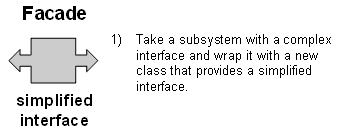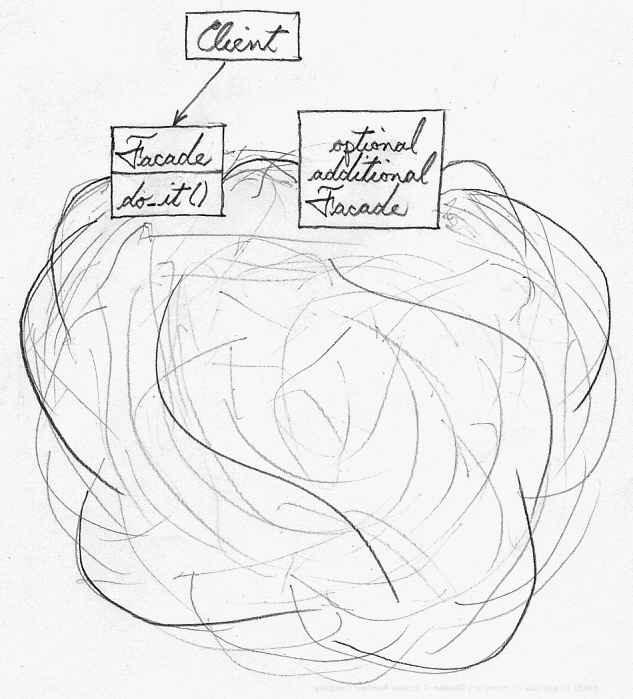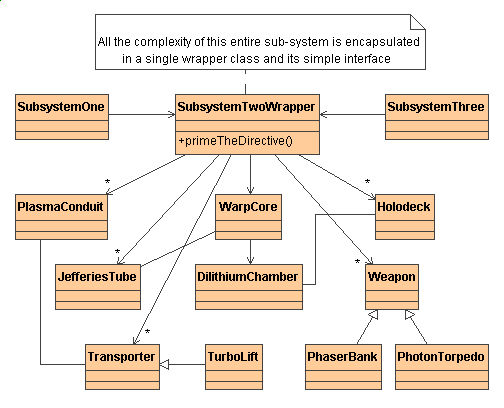

The Facade object should be a fairly simple advocate or facilitator. It should not become an all-knowing oracle or "god" object.

SubsystemOne and SubsystemThree do not
interact with the internal components of SubsystemTwo.
They use the SubsystemTwoWrapper "facade" (i.e. the
higher level abstraction).


Whereas Flyweight shows how to make lots of little objects, Facade shows how to make a single object represent an entire subsystem. [GoF, p138]
Mediator is similar to Facade in that it abstracts functionality of existing classes. Mediator abstracts/centralizes arbitrary communications between colleague objects. It routinely "adds value", and it is known/referenced by the colleague objects. In contrast, Facade defines a simpler interface to a subsystem, it doesn't add new functionality, and it is not known by the subsystem classes. [GoF. p193]
Abstract Factory can be used as an alternative to Facade to hide platform-specific classes. [GoF, p193]
Facade objects are often Singletons because only one Facade object is required. [GoF, p193]
Adapter and Facade are both wrappers; but they are different kinds of wrappers. The intent of Facade is to produce a simpler interface, and the intent of Adapter is to design to an existing interface. While Facade routinely wraps multiple objects and Adapter wraps a single object; Facade could front-end a single complex object and Adapter could wrap several legacy objects. [Design Patterns Explained, p105]
Question: So the way to tell the difference between the
Adapter pattern and the Facade pattern is that the Adapter wraps
one class and the Facade may represent many classes?
Answer: No! Remember, the Adapter pattern changes the
interface of one or more classes into one interface that a client
is expecting. While most textbook examples show the adapter
adapting one class, you may need to adapt many classes to provide
the interface a client is coded to. Likewise, a Facade may
provide a simplified interface to a single class with a very
complex interface. The difference between the two is not in
terms of how many classes they "wrap", it is in their intent.
[Head First Design Patterns, p260]